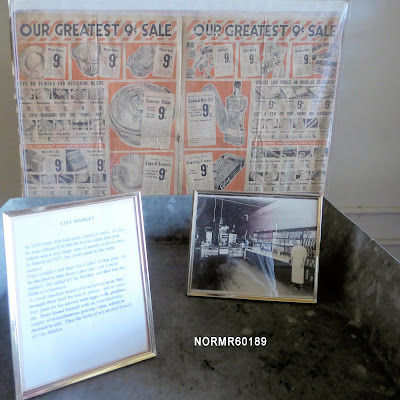 |
| Instructions on my 1-Gallon Container of Sea Foam Gasoline Additive |

Knock on Fiberglass, the Onan generator is doing great, 8-1/2 years after manufacture (My 210P was manufactured in December 2012 and I took delivery in December 2013; I've had it for about 7-1/2 years).
Is it a good idea to use a gasoline additive? See the notes at the end of this post, including GM and Onan generator. That said, here is my experience to date......
I do use a gasoline additive intermittently. I've had good experience, yours may be different. Note: This post is not an endorsement or recommendation; it is a statement of my experience.
I use a gasoline additive primarily to stabilize the gasoline in the Onan Carburetor. When we purchased the Roadtrek in December 2013 we were only able to use it about 4-8 weeks each year. As a consequence it was stored for long periods. Even when stored I did attempt to run the generator monthly and according to the Onan hour meter I've been largely successful. I do have a log. However, the same gasoline could be in the Chevy tank for 3 months or more, because of limited driving.
I do also change the Onan engine oil about once each year, and I follow the manufacturer's viscosity recommendations. I assume my good fortune to date with the generator is attributable in part to the maintenance, fuel stabilizer and monthly operation in accordance with my Onan manual.
In cold weather I do add a fuel stabilizer to the Roadtrek gas tank. I'd been using a product called Sea Foam (r) for many years in small gasoline engines including outboard motor, snow blowers and lawn mowers. There are other products, such as Sta-Bil(r) which I used some decades ago.
I add SeaFoam to the gas tank usually when storing the vehicle. I don't add it to every tankful of gas. I began buying the 16 oz. bottle but switched to the 1-gallon container. because it is less costly per ounce. I've probably used about 20 pints to date.
I transfer the SeaFoam to SIGG bottles so I can carry it with me. I usually have two in the outside storage of the Roadtrek. When full, these each hold 20 ounces; I usually don't fill them to capacity.
According to my Chevy passenger van manual, the fuel tank is 31 gallons capacity.
I checked the label on my gallon container of SeaFoam and here are excerpts from the printed instructions:
"For Fuel Stabilization Use 1 pint [16 ounces] to 16 gallons to stabilize and condition fuels.....
Use 1 ounce per gallon for 4-cycle engines.....Add more to clean, less to maintain."
1 oz per gallon is 16 ounces per 16 gallons. I usually add when the tank is half full if I am planning to store the vehicle. I then take a short trip in the Roadtrek to mix the conditioner into the gas. That's about 16 ounces per 15-1/2 gallons of gasoline. I then run the generator at about half load for an hour which pulls the conditioned gasoline into the Onan carburetor and exercises it well. I do allow the generator a cool-down period under low load.
As a consequence the Onan generator may have as much as 1 ounce of SeaFoam per gallon of gasoline stored in the carburetor.
I don't use SeaFoam with every tank of gas, nor do I add it to the gas tank each and every time I run the Onan. However, I do flush the Onan carburetor and fill it with new gas by running it once each 4-5 weeks. On occasion, I may miss a few days. The Onan hour meter indicates I do run it on average slightly less than one hour per month.
Is it expensive?
One gallon of SeaFoam is about $55. I have used 2+ gallons in 7-1/2 years. That's a cost of about $7.33 per year. In recent years I've stored the vehicle less and so I use less. The 210P currently has about 45,000 miles.
Is it recommended by automotive manufacturers?
I unaware of any automobile manufacturer which recommends gasoline additives. The Chevy 3500 manual for my Roadtrek states "GM Fuel System Treatment Plus is the only gasoline additive recommended by General Motors."
What does Onan say about this?
My genset manual (for KV) says this about gasoline additives:
"Storing the Genset - Proper storage is essential for preserving top generator performance and reliability when the genset cannot be exercised regularly and will be idle for more than 120 days.
1. Gasoline Models. Fill the fuel tank with fresh fuel and add a fuel preservative ("OnaFresh" TM) , following the instructions on the container label. Unless a preservative (stabilizer) is added, the gasoline in the fuel system will deteriorate causing fuel system corrosion, gum formation and varnish-like deposits which can lead to hard starting and rough operation.
Then run the genset for about 10 minutes at approximately 1/2 rated power to fill the fuel lines with the fresh fuel and preservative."
Original material http://roadtrek210.blogspot.com/ (c) 2021





















































